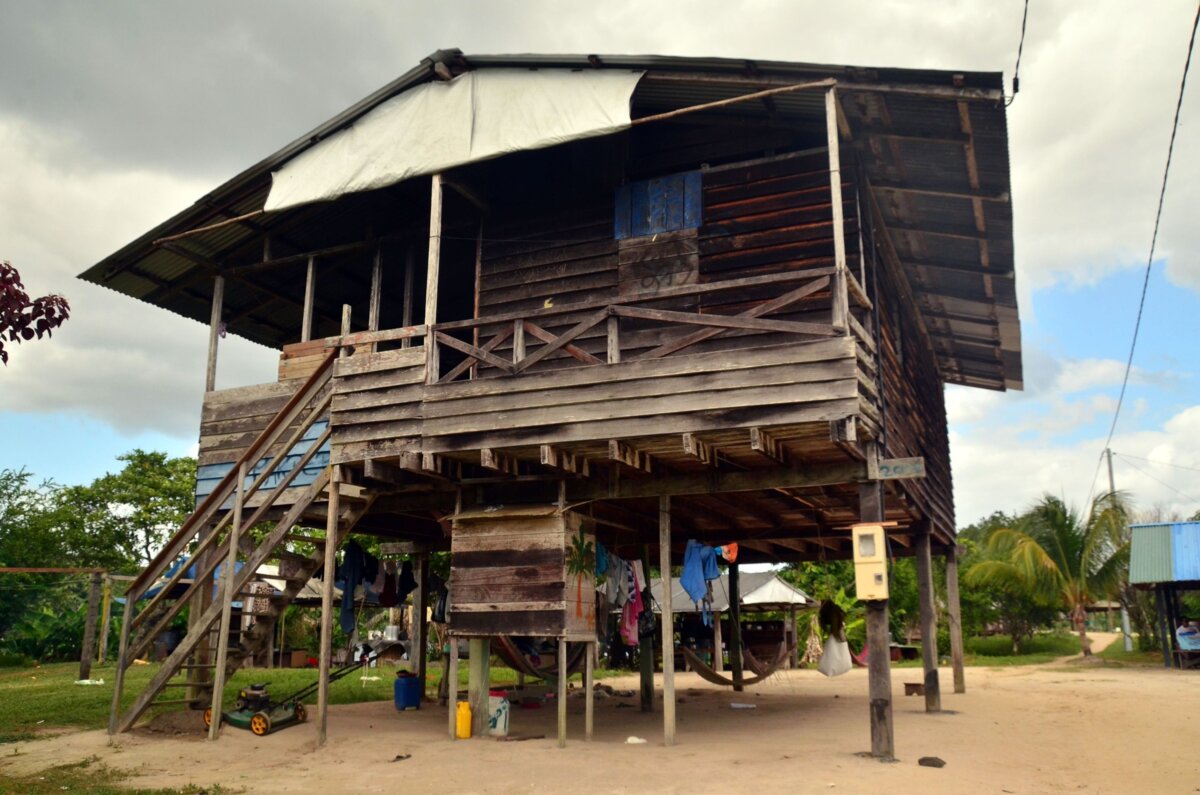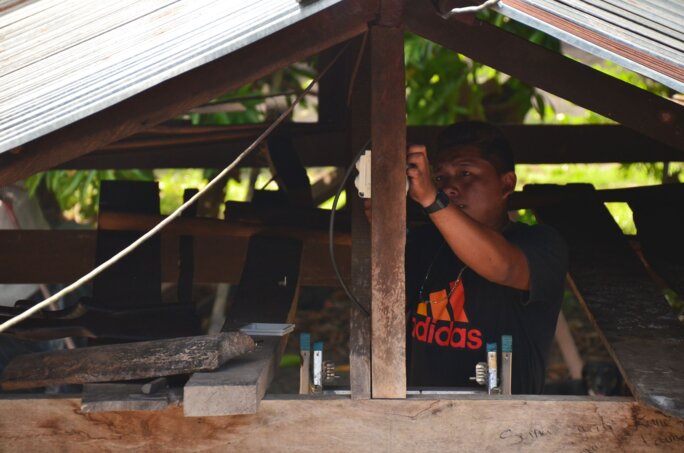Pilima, with a population of about 50 inhabitants, is one of five Amerindian villages in the western Haut-Maroni region of French Guiana, some 350 kilometres inland from the Atlantic coast. It sits on a hill above the Maroni river, which marks the border of the French territory with Surinam, a dark mass of water that breaks into rapids a few hundred metres further downstream.
The forested region of Haut-Maroni is home to about 1,000 inhabitants from three indigenous peoples, the Wayana, Teko and Apalai who live in semi-autonomy, far from the capital Cayenne (getting there involves hours of travel by pirogue and then a plane) and a world away from the European Space Agency’s rocket launch centre at Kourou.
Pilima, which takes its name from the family who founded the settlement, and which in truth is more a hamlet than a village, has yet be connected to an electricity grid. In early 2018, French utility group EDF set up a small photovoltaic power plant but, more than 12 months later, none of the homes have yet been cabled to it. “For the moment, the plant doesn’t work for anyone,” said Manalipo Talimeu, the grandson of the local tribal chief, speaking against the rattling noise of the family power generator close by. “All the villagers are waiting impatiently. My grandfather, even, was happy to see the electricity arrive, but he died before.”

Enlargement : Illustration 1

In western French Guiana, a rural region of forested land and river, one person out of every three lives without an electricity supply. The multiple reasons include the vast geographical spread of the region and the spontaneous building of habitations, but also the organisational and funding failures of public services.
In 2009, a project was launched to establish photovoltaic power plants and back-up thermal units in each of the five largest villages in the Haut-Maroni sector, at a cost of more than 12 million euros. For the “communauté de communes” of west French Guiana, the CCOG, which is a public body that coordinates the common development of all the communes in the region, the electrification project is its biggest ever financial investment. In one of the villages, Taluen, a hybrid electrical power plant of around 1,000 square metres was set-up, which the CCOG described, without intended irony, as “the biggest in Europe”.
In 2016, EDF chairman and CEO Jean-Bernard Lévy travelled to Haut-Maroni to inaugurate the scheme, but still today the final phase of the project that began ten years ago is uncompleted. At the end of May this year little more than a third of the region’s inhabitants were connected to a grid. Meanwhile, with the delays in rolling out the project launched in 2009, the power plants are using equipment that will soon be outdated. “Technology rapidly evolves, and the technology chosen in 2012 will certainly need to be reviewed,” admitted the CCOG.
Most inhabitants have long been used to operating individual fuel-powered electricity generators, (mostly fired up in the evening, to provide electricity for lighting, to restart fridges and freezers, to recharge mobile phones or watch television), but at a cost –average fuel costs are between 200 and 300 euros per month. The fuel is sold in tanks by Chinese traders in along the Maroni river in nearby Surinam. The shops, built on piles, are shabby places reached by pirogue, and also sell fresh beer, poor quality foodstuffs and even prostitutes by the half-hour.
“Ever since my childhood I’ve heard politicians tell us at each election, ‘We’re going to give you water, electricity, the telephone’,” said villager Roberto Toineike, “But until now nothing happened.” He was speaking just as the village was being visited by a team from French Guiana’s national electricity users’ safety department, based in the capital Cayenne. The team was there to give the final go-ahead for Toineike’s home to be connected to the local grid. His is one of several which over recent months have been equipped, out of public funds, with electricity plugs, light switches and fuse boxes. The cabling work is carried out by young villagers who have been trained by a local association.

Enlargement : Illustration 2

The sheet metal hut of another of the villagers, Jean-Marie, was also due to be soon connected to the grid. He recalled his childhood evenings where the only light in the family home was from “the wood fire, candles and a forehead torch”. The arrival of fuel-powered generators allowed the comfort of a freezer and television. “You can watch television, but not leave it on all the time, and you need to unplug it because it consumes [electricity] even when it’s switched off,” he said.
The villagers have long been careful in their use of electricity because of the cost in fuel, and those who are finally connected to the grid will have to continue with that habit because the local power plants are limited in both the amount of electricity they supply, and can stock. A monthly limit is placed on each household, and a digital meter monitors consumption daily; if it detects over-consumption, the user is alerted by a mobile phone text message.
There is no cost to the user during the first three months after connection to the local grid, which EDF says is to allow families to adapt to the new system. After that, they will have to pay a flat monthly sum of around 30 euros.
-------------------------
- The French version of this article can be found here.


